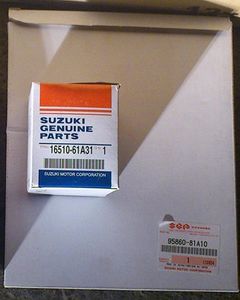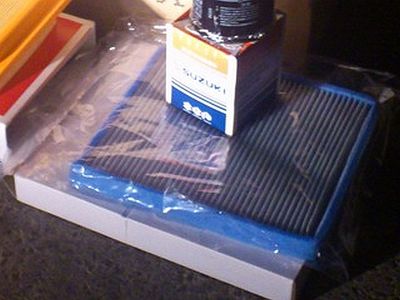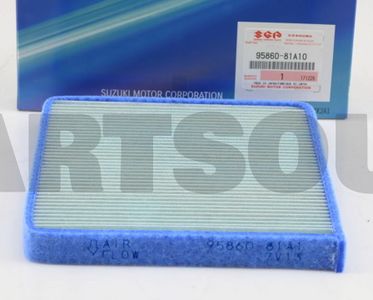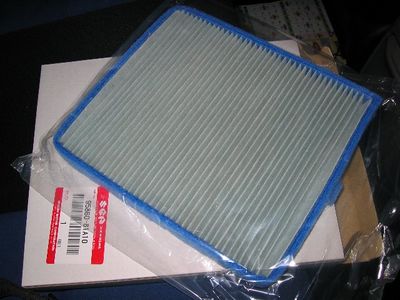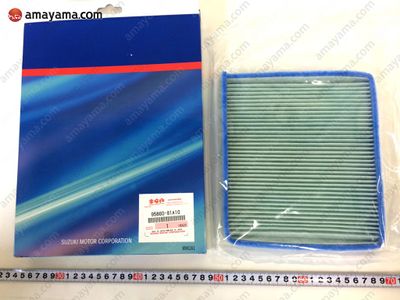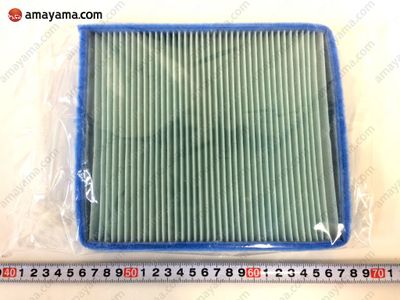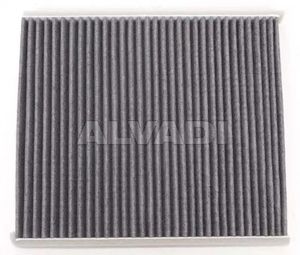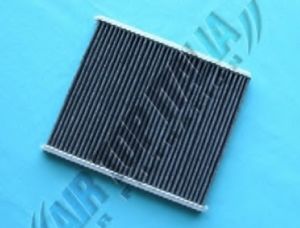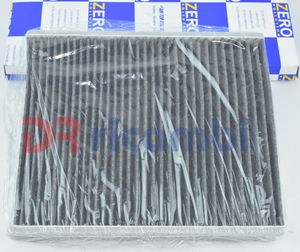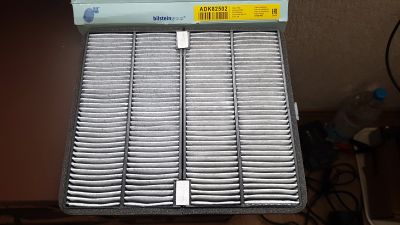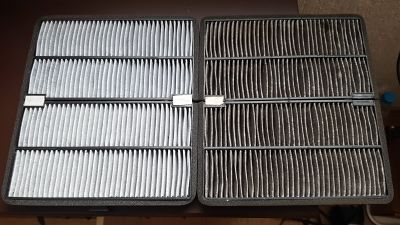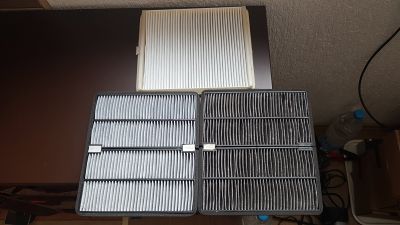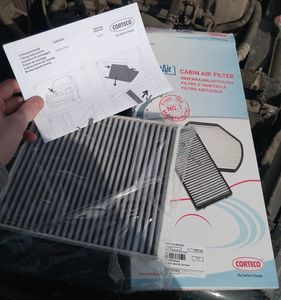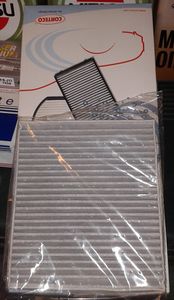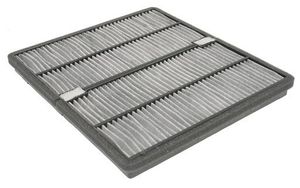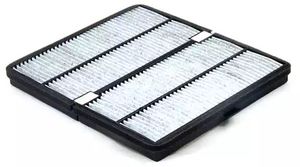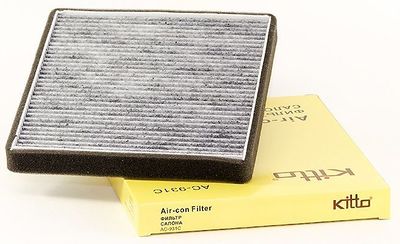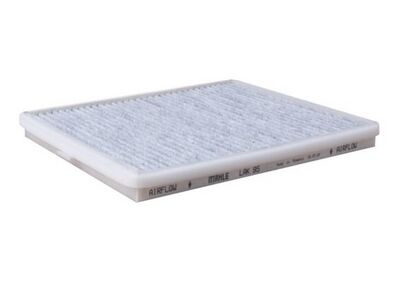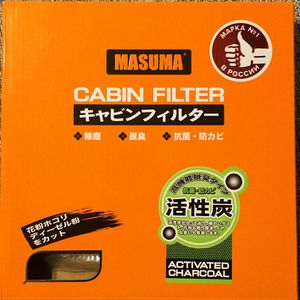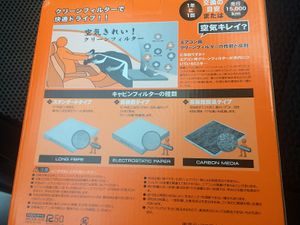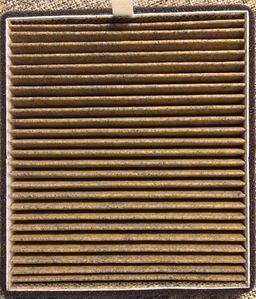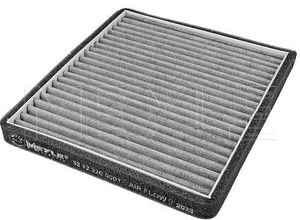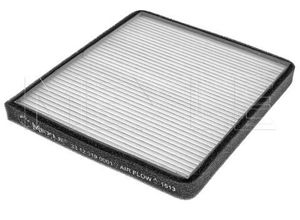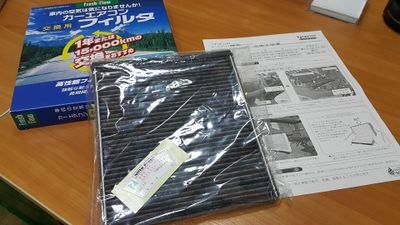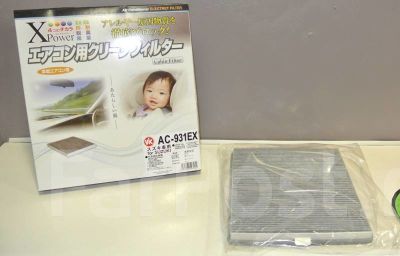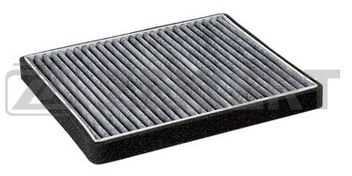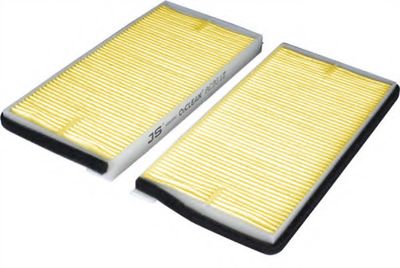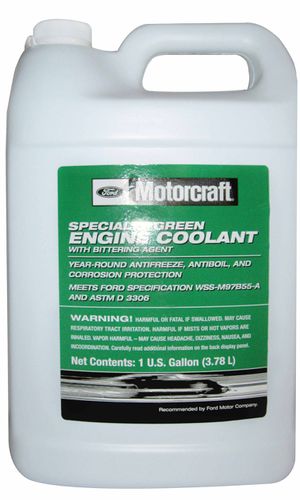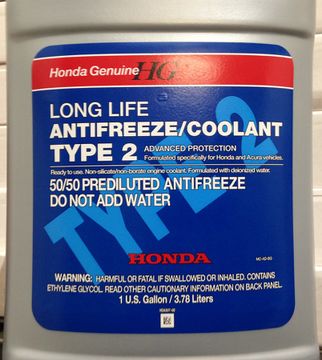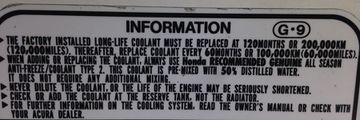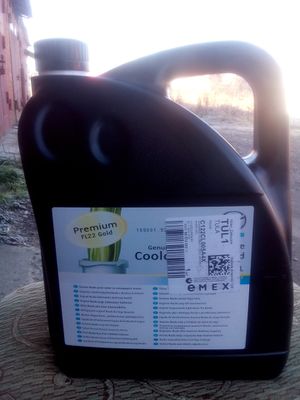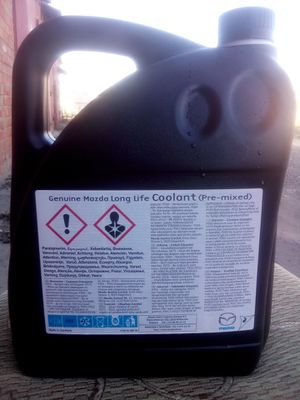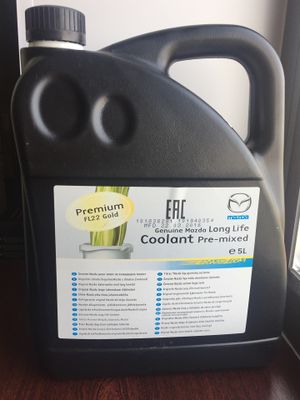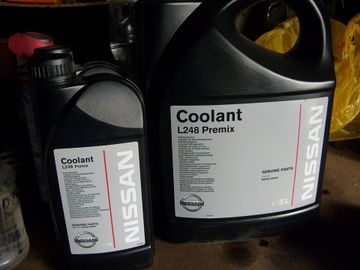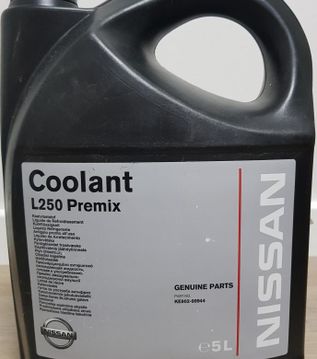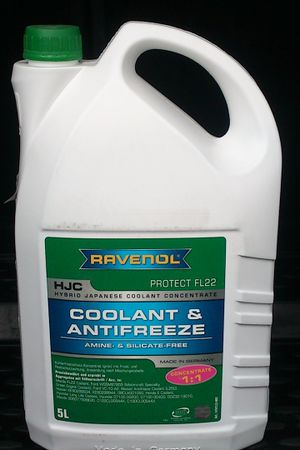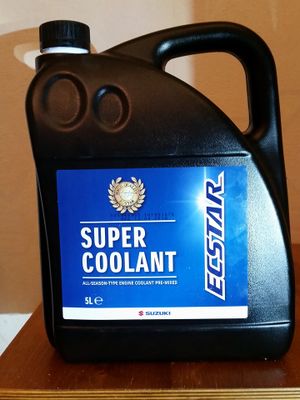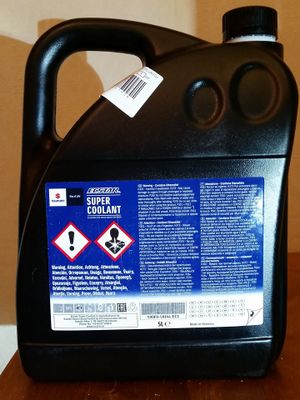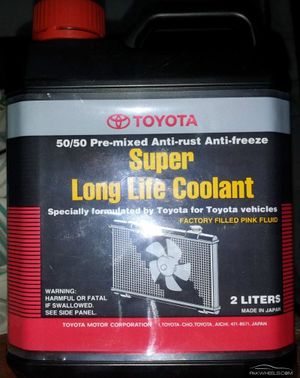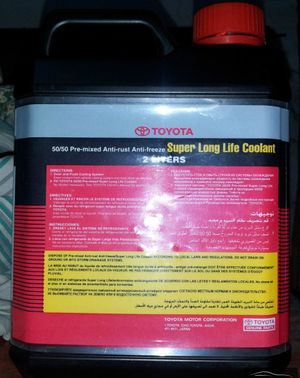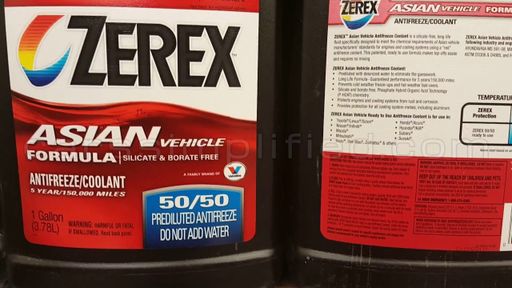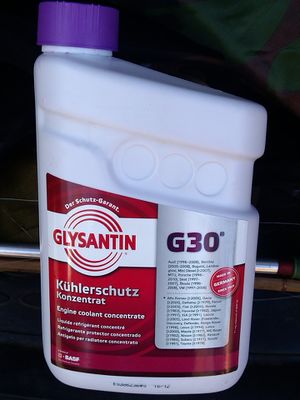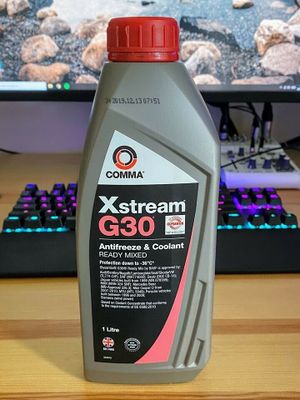![]() The content of any article might be expanded / improved in the future - revisit it sometimes.
The content of any article might be expanded / improved in the future - revisit it sometimes.
![]() Seen a mistake? Know something that isn't written? Edit and change this article yourself!
Seen a mistake? Know something that isn't written? Edit and change this article yourself!
![]() Some images in the article (if present) can be enlarged by clicking on them.
Some images in the article (if present) can be enlarged by clicking on them.
Contents
- 1 Introduction
- 2 Common notes about engine and transmission oils
- 3 Notes on engine oil filters and engine air filters
- 4 Notes on cabin air filters
- 4.1 Quick advice
- 4.2 Original Suzuki filters for Jimnys 3
- 4.3 Fiber-only aftermarket filters for Jimnys 3
- 4.4 Aftermarket fiber + charcoal filters for Jimnys 3
- 4.4.1 By sub-brands owned by Air Top Italia
- 4.4.2 Blue Print ADK82502
- 4.4.3 Corteco 80001447
- 4.4.4 JS Asakashi AC931C
- 4.4.5 Kitto AC-931C
- 4.4.6 Knecht LAK 95
- 4.4.7 Magneti Marelli 154703714750
- 4.4.8 Mahle LAK 95
- 4.4.9 Masuma MC-1054CL
- 4.4.10 Meyle 33-12 320 0001
- 4.4.11 Nitto F801
- 4.4.12 RAF RF001HYX
- 4.4.13 Sivento G690
- 4.4.14 Vic AC-931EX
- 4.4.15 Zekkert IF-3232K
- 4.5 Aftermarket fiber + anti-bacterial filters for Jimnys 3
- 4.6 Aftermarket fiber + charcoal + anti-bacterial filters for Jimnys 3
- 4.7 Original Suzuki filters for Jimnys 4
- 4.8 Fiber-only aftermarket filters for Jimnys 4
- 4.9 Aftermarket fiber + charcoal filters for Jimnys 4
- 4.10 Aftermarket fiber + anti-bacterial filters for Jimnys 4
- 4.11 Aftermarket fiber + charcoal + anti-bacterial filters for Jimnys 4
- 5 Notes about engine coolants
- 6 Notes on brake fluids
- 7 Notes on power steering fluids
Introduction
Quick intro
If you don't have the time, nerves or intellectual capacity to read the full chapters, just skip over to each "quick" subchapter for specific advice on which proper fluid or filter product to select.
![]() This article contains recommendations and links to specific commercial products. There is no (or should be no) affiliation nor interest for anyone on this web site if you buy any of those products. The purpose of mentioning them is simply to list any compatible products which are known to exist. All lists of those products are sorted alphabetically.
This article contains recommendations and links to specific commercial products. There is no (or should be no) affiliation nor interest for anyone on this web site if you buy any of those products. The purpose of mentioning them is simply to list any compatible products which are known to exist. All lists of those products are sorted alphabetically.
![]() Precise specifications and quantities of regular maintenance consumables, as well as regular maintenance intervals are written in the wiki article "Regular maintenance intervals and consumables"
Precise specifications and quantities of regular maintenance consumables, as well as regular maintenance intervals are written in the wiki article "Regular maintenance intervals and consumables"
![]() If you are considering using some additives for the engine oil and/or for transmission oils, read the wiki article "Oil additives (engine, transmission)" first, or just take a quick "rough" advice - don't use them.
If you are considering using some additives for the engine oil and/or for transmission oils, read the wiki article "Oil additives (engine, transmission)" first, or just take a quick "rough" advice - don't use them.
Full intro
- Beware that selecting a suitable / properly matching fluid and filter (oil, coolant, etc.) is vital for the longevity of the mechanical systems which use those fluids!
- For example, the longevity of the engine, gearbox, etc. is highly dependent on what exact oil type is used.
- Using a high quality fluid from a good manufacturer is one thing, but equally as important is using a properly matching type of fluid.
- However, selecting a properly matching fluid type can be a rather tricky endeavor, as there can be significant differences among seemingly unimportant specification details.
- For example, the most common misconception regarding oils is that only the viscosity specification is relevant / important.
- This would mean choosing an engine oil only by looking if it's 10W-40 or 5W-30 or etc.
- Oil's viscosity is just one of its attributes.
- Oils have many other chemical attributes which are equally as important.
- Generally, the petrochemical industry and technology is so vastly complicated in discerning all the types, standards, classifications, ranges, compositions, ratings, regulations, gradings and whatnot, that it is very hard even for professional petro-chemists to discern it all.
- This is additionally made worse by several "moot" standards and classifications in that industry (example are API GL-x classifications).
- In short, the industry has never settled on properly formulated international standards about many material and chemical characteristics of petrochemical products, so there are various country-level or even "industry jargon" standards in use around.
- For example, API classifications are an old American industry rating which has not yet been replaced by anything better designed and with world-wide consensus.
- In short, the industry has never settled on properly formulated international standards about many material and chemical characteristics of petrochemical products, so there are various country-level or even "industry jargon" standards in use around.
- This is additionally made worse by several "moot" standards and classifications in that industry (example are API GL-x classifications).
- An additional layer of confusion is of course added by various well-established street-garage myths and misconceptions, which are sometimes "reinforced" by some tricky / slimy official factory claims.
- Example 1: "A color of an engine coolant determines its type."
- Even some car manufacturers (Ford for example) refer to coolant types by color when directing their customers on which coolant type to buy!
- That's because they expect you to select only from their genuine line of their "own" coolant products, and they know which of their colors represent each coolant type!
- Even some car manufacturers (Ford for example) refer to coolant types by color when directing their customers on which coolant type to buy!
- Example 2: "Transmission (gear box, differential) oils should never be replaced."
- Today many car manufacturers specify their factory filled transmission oils as "lifetime".
- What they mean in practice is: "Those oils will certainly last until the end of the mileage or time covered under our warranty. After that, we don't care. In fact, we care that you come to us later for an expensive transmission overhaul after that stale worn oil wrecks it!"
- Today many car manufacturers specify their factory filled transmission oils as "lifetime".
- Example 1: "A color of an engine coolant determines its type."
- The result of all this mess is that there is a very high chance that everyone except the most proficient users will make a wrong selection of fluids and filters for their vehicle.
- Most alarmingly, the majority of car mechanics are also misled as a result of all these industrial mis-standardisations and street-garage misconceptions, as well as some malicious factory claims.
- Therefore, your "trusted and honest" car mechanic to who you entrust fluid and filter selection and replacement for your vehicle might be no more educated about the topic than you are!
- He'll be definitely less educated than you after you read this article!
- Therefore, your "trusted and honest" car mechanic to who you entrust fluid and filter selection and replacement for your vehicle might be no more educated about the topic than you are!
- Luckily, ordinary motor vehicle users do not need to dive deep into all those peculiarities of the petrochemical and automotive industry.
- Otherwise, it would have to be a really deep dive indeed!
- As long as a few specific guidelines are being adhered to, an ordinary user can make a proper fluid selection.
Common notes about engine and transmission oils
Quick advice
Engine oils
For petrol Jimnys 3, choose a high quality engine oil with the following properties:
- Fully synthetic;
- Conforms to API SL, SM or SN standard;
- Suzuki's petrol engines accept several oil viscosities (both at "cold" oil temperature and at "working" oil temperature), and the ideal one might depend on the climate in your area and/or on your typically intended vehicle usage.
- Examples of typical vehicle usage are lean on-road driving, short trips in cold weather, hard off-road driving, fast&furious driving in scorching summer, etc.
- It all comes down to what will the typical engine's operating temperature range be.
- For colder operating temperatures, choose an engine oil with lower operating viscosity (lower SAE numbers), and vice versa.
- It all comes down to what will the typical engine's operating temperature range be.
- The factory suggested SAE engine oil viscosities for your particular engine are written in the wiki article "Regular maintenance intervals and consumables".
- Examples of typical vehicle usage are lean on-road driving, short trips in cold weather, hard off-road driving, fast&furious driving in scorching summer, etc.
For diesel Jimnys 3, choose a high quality engine oil with the following properties:
- Fully synthetic;
- Conforms to ACEA B3 or B4 standard;
- If you really can not find any engine oil which satisfies this, then use an ACEA C3 engine oil.
- ACEA C3 engine oils might not provide adequate engine wear protection if top quality (very low sulphur) diesel fuel is not used.
- If you really can not find any engine oil which satisfies this, then use an ACEA C3 engine oil.
- The best viscosity is SAE 0W-40, but it is quite expensive.
- SAE 5W-40 viscosity has been proven as a great price-performance compromise.
- Do not use any engine oil with SAE xW-30 viscosity!!!
For petrol Jimnys 4, info is currently missing.
Oils for the manual gear box and for the transfer box
All manual gear box and transfer box models in Jimnys 3 require the same transmission oil specifications: API GL-4, SAE 75W-90.
There are not many such transmission oils in the aftermarket.
![]() Oil in the gear box and in the transfer box should be changed regularly, even if your mechanic (or even your vehicle's user manual) suggest that there is no need to !
Oil in the gear box and in the transfer box should be changed regularly, even if your mechanic (or even your vehicle's user manual) suggest that there is no need to !
Known fully compatible oils (fully synthetic):
- Castrol Syntrans Multivehicle 75W-90;
- Liqui Moly "Truck gear oil (GL4) 75W-90" - article 1446;
- Available only in 20 l canisters (meant for big trucks).
- Ravenol Motogear 75W-90;
- Red Line MT-90;
- Valvoline Gear Oil 75W-90;
Known fully compatible oils (semi synthetic):
![]() Fully synthetic oils are generally recommended over semi-synthetic oils, but in practice a high quality semi-synth oil might be just as good or even better than a low quality fully synth oil.
Fully synthetic oils are generally recommended over semi-synthetic oils, but in practice a high quality semi-synth oil might be just as good or even better than a low quality fully synth oil.
![]() Semi-synth oils are a completely fine choice if you change your transmission oils regularly (every 30-40 000 km or more frequently)
Semi-synth oils are a completely fine choice if you change your transmission oils regularly (every 30-40 000 km or more frequently)
.
If you can not find a fully compatible (API GL-4, SAE 75W-90) transmission oil, an imperfect alternative are API GL-4+, SAE 75W-90 oils.
Known somewhat compatible (GL-4+), fully synthetic oils:
- Castrol Syntrans Transaxle 75W-90;
- Liqui Moly "High performance gear oil GL4+ 75W-90";
- Liqui Moly article numbers: 4433 / 4434 / 1125 / 20462 / 21258.
- Different article numbers correspond to different bottle sizes (0,5 l or 1 l) and/or different regional label stickers (different language descriptions on the bottle) of the same product.
- Liqui Moly article numbers: 4433 / 4434 / 1125 / 20462 / 21258.
- Mannol Basic Plus;
- Mogul Syntrans 75W-90;
Known somewhat compatible (GL-4+), semi synthetic oils:
- No known oils.
![]() Do not use any transmission oil which has "API GL 4 / 5" or "API GL 5" mentioned anywhere on its packaging or in its brochures !!
Do not use any transmission oil which has "API GL 4 / 5" or "API GL 5" mentioned anywhere on its packaging or in its brochures !!
Oils for the differentials (front and rear)
All front and rear differential models in Jimnys 3 require the same transmission oil specifications: API GL-5, SAE 80W-90, hypoid.
There are not many such transmission oils in the aftermarket.
![]() Oil in the differentials should be changed regularly, even if your mechanic (or even your vehicle's user manual) suggest that there is no need to !
Oil in the differentials should be changed regularly, even if your mechanic (or even your vehicle's user manual) suggest that there is no need to !
Known fully compatible oils (mineral):
- Castrol EPX 80W-90;
- Eneos Super Multi Gear 80W-90;
- Gazprom G-Box Expert GL-5 80W-90;
- Liqui Moly "Hypoid gear oil truck (GL5) LD 80W-90" - article 3594;
- Available only in 20 l canisters (meant for big trucks).
- Liqui Moly "Hypoid gear oil (GL5) SAE 80W-90";
- Liqui Moly article numbers: 3924 / 4406;
- Different article numbers correspond to different regional label stickers (different language descriptions on the bottle) of the same product.
- Liqui Moly article numbers: 3924 / 4406;
- Mobil Mobilube HD Plus 80W-90;
- Ravenol EPX;
There are no known semi synthetic nor fully synthetic oils which are fully compatible with the required specifications, only mineral oils. However, using mineral oils appears to be OK for this application, as Suzuki has designed the differentials with this in mind. Just change the oil in them regularly as per the recommended replacement intervals, which are written in the wiki article "Regular maintenance intervals and consumables".
Detailed notes
- Engine and transmission oils can be of mineral composition, semi-synthetic or fully synthetic.
- There is no formal industry standard or classification for this, so generally any oil (for example: "5W-40 ACEA B3" engine oil) can either be mineral, semi-synthetic or fully synthetic. The only way to determine that is to read the description on oil's container, and one of these three should be written in plain English.
- Mineral oils should generally be avoided, as they are generally too much susceptible to many things and influences, and they loose their chemical and physical virtues relatively quickly during use.
- The only exception to this rule is if your vehicle manufacturer specifies a specific oil viscosity, and only mineral oils are produced in that viscosity.
- In that case, your choice of oil's composition is more or less pre-determined, as the manufacturer has already counted in that a mineral oil will be used. Just change it regularly.
- The only exception to this rule is if your vehicle manufacturer specifies a specific oil viscosity, and only mineral oils are produced in that viscosity.
- Fully synthetic oils should be used whenever a choice is possible, as they generally provide the most chemical and material virtues (depending on quality) and have the longest longevity.
- Semi synthetic oils are a very "moot" category, as there is no definition of what a "semi" really represents in terms or percentages or so.
- In other words, an oil which is 95% mineral and only 5% synthetic is also called "semi synthetic", with equal rights for that "name" as an other oil which is 20% mineral and 80% synthetic.
- This "vagueness" in definition is usually exploited in the industry.
- With semi-synthetic oils, the only rough estimation of what percentage of a semi synthetic oil is really synthetic, is to compare its price with its competition.
- Higher price should mean more synthetic compounds in it.
- This is why only a fully synthetic oil is a "safe bet".
- It was written earlier that viscosity figures ("xW-y") of oil are not the only important parameters.
- With engine oils, equally important characteristic is the exact "ACEA" or "API" category of the oil, or the exact vehicle manufacturer's standard which the oil needs to conform to.
- Either the ACEA classification, API classification or vehicle manufacturer's own classification will be specified for required engine oil in vehicle's owner's manual.
- Examples: API SH, API SL, ACEA B3, ACEA C4, Mercedes-Benz 229.3, Renault RN0710, Volkswagen 505.00, etc.
- Either the ACEA classification, API classification or vehicle manufacturer's own classification will be specified for required engine oil in vehicle's owner's manual.
- So, to properly choose a suitable engine oil, you need to watch out for three important parameters:
- Suitable viscosity (example: 5W-40);
- Suitable chemical characteristic classification (example: ACEA B3, API SL, Renault RN0710, etc.);
- After you find engine oils on offer which match the first two criteria, it's then your own choice to choose a mineral, semi synthetic or fully synthetic oil among them.
- With transmission oils (for the gearbox, transfer box and the differential), the other very important parameter (except the viscosity figures) is their API chemical classification.
- Using a transmission oil of wrong API classification can wreck the gears and other bits in your transmission!
- So, if the vehicle manufacturer has stated to use API GL-4 oil, make your best effort to adhere to that!
- The difficult part here is that API classifications are quite old and they have been poorly defined from technological viewpoint, so many oil manufacturers now produce "combined" or "enhanced" transmission oils which "exceed" the requirements of these classifications.
- The most common example is a transmission oil which is classified as "API GL-4/5" (non-standard, manufacturer's "classification").
- This is quite absurd, as API GL-4 and API GL-5 classifications are by definition totally incompatible!
- The other common example is a "classification" called "API GL-4+" which does not exist in any official books.
- Who knows what that "plus" represents!
- In summary, when choosing transmission oils, after selecting a suitable viscosity, make sure to select an exactly matching API classification.
- Try to avoid any "enhanced" or "combined" classifications like "API GL-4+" or "API GL-4/5" etc.
- In other words, if it says to use API GL-4 or if it says to use API GL-5, the safest decision is to use only precisely that one (no "+" or "combo" "APIs")!
- Try to avoid any "enhanced" or "combined" classifications like "API GL-4+" or "API GL-4/5" etc.
- The problem is that proper API GL-4 oils (which Jimnys 3 use for the gearbox and the transfer box) are becoming hard to find these days (as Jimnys 3 were designed in the 20th century you know).
- One of tried and recommended API GL-4 transmission oils Ravenol TSG.
![]() Those who are craving for some more knowledge about engine oils can get some of it at generic worldwide Wikipedia
Those who are craving for some more knowledge about engine oils can get some of it at generic worldwide Wikipedia
![]() Those who are craving for some more knowledge about transmission oils can get some of it at generic worldwide Wikipedia
Those who are craving for some more knowledge about transmission oils can get some of it at generic worldwide Wikipedia
Notes on engine oil filters and engine air filters
Quick advice
- There are numerous compatible aftermarket products available.
- Choose high quality products, especially engine oil filter and diesel fuel filter (for diesel Jimnys).
- If you don't know what is good, then choose what is expensive!
Detailed notes
- Replace the engine oil filter whenever engine oil is being replaced.
- Engine oil filter quality is important!
- Cheap, poor quality oil filters can cause 100 times more expensive damage than the amount of money saved when buying them.
- The difference between low quality and high quality engine oil filters is in the following:
- The total area of the filtering material;
- The porousness of the filtering material and for how long it stays proper as it gets dirty;
- The robustness of filter's casing;
- The robustness of the connection of the filtering material to the filter's casing;
- Engine air filter should be occasionally checked if it is dusty / dirty.
- This is especially important if the vehicle is regularly driven on dusty roads.
- A dirty engine air filter can hinder engine's power, cause higher fuel consumption and even long term engine damage.
- Higher quality air filters should have more more filtering area and better porousness of the filtering material, which stays proper for a longer time as the filter gets dirty.
Notes on cabin air filters
Quick advice
When selecting a cabin filter, consider which types of pollutants concern you personally the most:
- Ordinary fiber / paper filters (the most common products) filter only dust and some pollen.
- Filters which also contain carbon (charcoal) particles filter various odors, smells, gases and chemical vapors as well.
- The "biofunctional" / "antibacterial" etc. filters filter mold, bacteria, spores etc. as well.
A cabin filter can be made of:
- Paper / fiber (or a similar material) only;
- Typically white, but some are colored.
- Fiber + carbon (charcoal) particles;
- Such filters usually look "dirty" like having soot in them.
- Fiber + anti-bacterial coating;
- These filters are usually colored (non-white and non-gray), however an ordinary fiber filter can also be colored to deceive the buyer.
- Fiber + carbon + anti-bacterial;
The first type is usually the most common and the cheapest, while the 4th type is usually the rarest and the most expensive. However, prices (and quality) can vary significantly between manufacturers, as well between the stores.
Bear in mind that filters from different manufacturers have different quality, which consists of two factors:
- How well they filter what they filter.
- In other words - how small dust and pollen particles, which types of vapors and gases and how much of them.
- How much of the pollutants they can filter before they get clogged and become an obstruction to expected air flow into the cabin.
- In other words - what is their expected operational life time.
The following articles are one of many which explain the differences between different filtering capabilities of filters:
- The appearance and construction of a cabin filter may vary slightly from one manufacturer to another.
- Some filters are one-part construction, while some are two-part, and the parts can be factory glued or taped together.
- Always make sure to check the dimensions of a filter when buying.
Required dimensions for a compatible filter for Jimnys 3 are:
- Length : 213-217 mm
- Width : 183-188 mm
- Height : 19-20 mm
Required dimensions for a compatible filter for Jimnys 4 are:
- Length : ???-??? mm
- Width : ???-??? mm
- Height : ??-?? mm
Original Suzuki filters for Jimnys 3
The part numbers of Suzuki's genuine cabin / pollen filters for Jimnys 3 are:
- 95860-81A00
- 95860-81A01
- 95860-81A10
All three should be mutually compatible (same dimensions etc.). A guess is that the differences are probably "only" in the filtering capability.
- Suzuki cabin air filter 95860-81A10
Fiber-only aftermarket filters for Jimnys 3
Some of many compatible fiber-only (non-charcoal) aftermarket replacements for Jimnys 3:
- A suitable cabin filter is offered in the BigJimny Shop.
- Corteco 80001446
- Febi Bilstein 28201 and SWAG 84 92 8201
- These two appear to be mutually identical.
Aftermarket fiber + charcoal filters for Jimnys 3
Compatible aftermarket filters which truly contain proper charcoal (carbon) particles in a significant amount are quite rare (and usually significantly more expensive).
Known filters with charcoal particles are presented below. Add others if you find them!
By sub-brands owned by Air Top Italia
- All the listed filters below appear to be the same exact filter under different brand labels.
- The manufacturer claims that all these filter models are compatible for Jimnys, but specifies their dimensions as 213 mm x 194 mm x 20 mm.
- They should still fit, but someone should verify in practice.
- Aster AS2547
- Model AS2547F is the ordinary fiber filter - do not mix them up!
- Fasty 5547K
- Model 5547 is the ordinary fiber filter - do not mix them up!
- Zaffo Z547 / 547
- Model ZF547 / 547F is the ordinary fiber filter - do not mix them up!
- Zero WZ1547
- Model WZ1547F is the ordinary fiber filter - do not mix them up!
Blue Print ADK82502
- This filter model used to be a two-part construction with embedded carbon (charcoal) particles.
- However, there have been recent reports of "sightings" of the same filter model which contained a lot less charcoal particles, and also of a plain ordinary blue fiber filter in a single-part case.
- It appears that this manufacturer puts vastly different filters in the same packaging on a seemingly random basis.
- So, if buying this filter model (or any other filter model for that matter), double-check with the seller on what exact filter is in the box!
- Two "same" cabin filters Blue Print ADK82502.
- The amount of carbon particles in the newer (left) filter is significantly less than in the older (right) filter.
- There have also been confirmed sightings of this filter model which had a pure white color, without a single carbon particle in it.
- Obviously the amount of carbon particles in this filter model varies widely from batch to batch!
- TOP: Filter Mahle LA 95 - ordinary fiber, single-piece construction.
- LEFT: Blue Print ADK82502, newer production date.
- RIGHT: Blue Print ADK82502, older production date.
Corteco 80001447
- New cabin air filter Corteco 80001447
- The manufacturer claims it is a charcoal filter, but the filter does not appear significantly "sooty" in these pictures.
- Model 80001446 is the ordinary fiber filter - do not mix them up!
JS Asakashi AC931C
- Model AC931J is the ordinary fiber filter - do not mix them up!
- Model AC931B is the even more advanced fiber+charcoal+bacterial filter - do not mix them up!
Kitto AC-931C
- Model AC-931 is the ordinary fiber filter - do not mix them up!
Knecht LAK 95
- The same filter as Mahle LAK 95.
- Manufacturer claims that it is "activated carbon filter", but this picture (taken from manufacturer's catalogue) does not show a particularly sooty looking filter.
- There is also a model "Knecht LA 95", which is ordinary paper filter - do not mix them up!
Magneti Marelli 154703714750
- No image currently available.
Mahle LAK 95
- The same filter as Knecht LAK 95.
- Manufacturer claims that it is "activated carbon filter", but this picture (taken from manufacturer's catalogue) does not show a particularly sooty looking filter.
- There is also a model "Mahle LA 95", which is ordinary paper filter - do not mix them up!
Masuma MC-1054CL
- New cabin air filter Masuma MC-1054CL
- Model MC-1054 is the ordinary fiber filter - do not mix them up!
Meyle 33-12 320 0001
- New cabin air filters from Meyle - representative catalogue images
- This filter model has been discontinued by its manufacturer.
- It is not listed in their catalogue any more and only the ordinary fiber model 33-12 319 0001 remains in production.
- Good luck finding the discontinued specimens!
- Official response from Meyle in y2021m01 regarding this matter: "Unfortunately, we no longer carry the activated carbon version of the filter in our range. A new inclusion is not planned. Unfortunately, we only carry the normal version."
Nitto F801
- Model F805 is the ordinary fiber filter - do not mix them up!
RAF RF001HYX
- According to this Russian user report, this is a poor quality filter (poor filtering capacity).
Sivento G690
- No image currently available.
- Model P690 is the ordinary fiber filter - do not mix them up!
Vic AC-931EX
- Model AC-931E is the ordinary fiber filter - do not mix them up!
Zekkert IF-3232K
- Model IF-3232 is the ordinary fiber filter - do not mix them up!
Aftermarket fiber + anti-bacterial filters for Jimnys 3
Listed below are known filters which have additional anti-allergic, anti-bacterial or mold retention effects (but no activated carbon).
Kavo SC-9507X
- No image currently available.
- Model SC-9507 is the ordinary fiber filter - do not mix them up!
Aftermarket fiber + charcoal + anti-bacterial filters for Jimnys 3
Listed below are known filters which have both activated carbon and additional anti-allergic, anti-bacterial or mold retention effects.
JS Asakashi AC931B
- Model AC931J is the ordinary fiber filter - do not mix them up!
- Model AC931C is the fiber + carbon filter - do not mix them up!
Original Suzuki filters for Jimnys 4
The part numbers of Suzuki's genuine cabin / pollen filters for Jimnys 4 are:
- ?????-?????
Fiber-only aftermarket filters for Jimnys 4
Write here if you know of some ...
Aftermarket fiber + charcoal filters for Jimnys 4
Write here if you know of some ...
Aftermarket fiber + anti-bacterial filters for Jimnys 4
Write here if you know of some ...
Aftermarket fiber + charcoal + anti-bacterial filters for Jimnys 4
Write here if you know of some ...
Notes about engine coolants
Quick advice
All Jimnys 3 (petrol and diesel) require the use of engine coolants with the following properties:
- Ethylene-glycol;
- Strictly silicate free;
- Preferably 2-EHA free;
- Preferably phosphated;
- If diluting a coolant concentrate with water, use of distilled water only;
Main notes to keep in mind:
- Engine coolant should be replaced regularly according to the factory specified time or mileage replacement interval (whichever happens first), no matter what your mechanic or anyone else suggests!
- A common misconception is that a used engine coolant is good as long as it still provides required freezing protection.
- The reason why old coolant has to be regularly replaced despite that, is because engine coolants have special anti-corrosion additives which "wear off" after a certain mileage or time of use.
- Believe it or not, color of an engine coolant is irrelevant.
- Color is just an "illustration" dye which is added in the factory to "guide" (in practice: mislead!!) customers!
- Engine coolants of different colors can be mixed (believe it or not), but engine coolants of different chemistries must not!
- Color is just an "illustration" dye which is added in the factory to "guide" (in practice: mislead!!) customers!
Possible consequences of using a wrong or expired engine coolant in a vehicle:
- Coolant pump performance degradation and/or eventual or sudden seizure;
- This leads to premature engine wear by creating dry pockets in the engine or even a catastrophic engine failure due to undetected overheating;
- Coolant leaks on various spots in or around the engine, due to worn/eaten seals or joints in the coolant pipes caused by wrong chemicals in the coolant;
- Some of these leaks can happen in particularly inaccessible places in the engine bay, requiring half the engine to be dismantled in order to access and replace a simple pipe seal or joint;
- Build up of scale and deposits inside the coolant pipes and passages, caused by the reactions of wrong chemicals in the coolant with the materials of which the pipes, seals and joints are constructed;
- This can severely degrade the flow of the coolant through the engine and thus its cooling;
- This can also cause "dry pockets" in the engine, which then wear off particularly prematurely.
- Believe it or not, various electrical issues in the vehicle, which 99% of people diagnosing the issue will never correlate to a coolant issue root cause;
- The electrical conductivity of an expired coolant increases significantly and thus can cause various parasitic currents which then cause intermittent electrical issues.
Known fully compatible engine coolants
Ford "Motocraft Specialty Green Engine Coolant"
- What an imaginative name for a product ...
- This is the same product as Mazda FL22 (Ford and Mazda mutually share(d) a lot of technology)
- Its color is dark green
- Product link (search for a product titled "Specialty Green Engine Coolant" near the bottom of that web page)
- Additional link
- Ford article code: WSS-M97B55-A
- Pre-mixed (factory diluted with water) edition code: VC-10-A1
- Concentrated edition code: VC-10-A2
Honda "Type 2" coolant
- Not much is currently known about this coolant except that it is essentially quite similar (if not the same) as Mazda FL22.
Mazda FL22
- Mazda P.N.: C122-CL-005 4X
- Alternative Mazda P.N.: 0000-77-508E-20 (shortened P.N.: 77508E20);
- This is a pre-mixed (factory diluted with water) coolant
- This is the same product as Ford "Motocraft Speciality Green Engine Coolant" (Ford and Mazda mutually share(d) a lot of technology)
- Its color is dark green.
Nissan L248 and L250
- Nissan L250 has P.N.: KE902-99934
- This is concentrated coolant
- Nissan L248 has P.N.: KE902-99944 and/or KE902-99945
- L248 is simply pre-mixed (factory diluted with water) edition of L250
Ravenol HJC
- Concentrated edition - diluting required
- Pre-mixed down to -60 C edition
- Pre-mixed down to -40 C edition
- Pre-mixed down to -15 C edition
Suzuki "LLC Super (Blue)"
- What an imaginative name for a product ...
- Suzuki P.N.: 990F0-59J44-EC1
- Also sold under Suzuki's "Ecstar" sub-brand name
- This is a pre-mixed (factory diluted with water) coolant
Toyota "Super Long Life Coolant"
- What an imaginative name for a product ...
- Typical shortened name: Toyota SLLC
- Toyota P.N.: 08889-80029
- This P.N. might not be valid in all world regions;
- Its color is pink
Valvoline "Zerex Asian"
- Valvoline P.N. 675130;
- Product web page
- This product does not appear to be available in Europe, but it is available in USA;
Known somewhat compatible engine coolants
If you can not find fully compatible coolant products (or if you can find them, but find them too expensive), you can use one of the alternative products below. They are silicate-free, but they are not phosphated and most of them contain smaller or higher content of 2-EHA.
The first two coolants below conform to BASF's standard G30.
BASF's own Glysantin G30
Comma Xstream G30
Conforming to Volkswagen "TL-774-F" standard
Known somewhat compatible engine coolants - conforming to Volkswagen "G12+" standard (note: just one "plus") (also known as Volkswagen "TL-774-F" standard):
- Ina BS Super
- Liqui Moly KFS 12+
- Liqui Moly article number 6934
- Additional link
- Wurth 0892 3320015
- Many others ....
Detailed notes
- The situation with suitable engine coolants is the most chaotic of all.
- In the simplest overall terms, just know that there is no common standard whatsoever about types and variants of engine coolants.
- Also be very much aware that a color of an engine coolant does not determine its type!
- Determining engine coolant's type based on its color is like determining person's nationality based on their hair color!
- There are various types and private "standards" of engine coolants, and not all are suitable for just any engine!
- In the simplest terms, most Asian (Japanese, Korean, Chinese etc.) vehicle manufacturers use phosphate based engine coolants and they avoid silicate based coolants like poison. They also don't like the presence of a 2-EHA chemical in engine coolants.
- On the other hand, most European vehicle manufacturers use silicate based engine coolants and avoid phosphate based coolants like a plague. Usage of 2-EHA is also common for European cars.'
- Finding a non silicated, 2-EHA free, phosphated engine coolant in Europe is like finding a pig in Teheran.
- Usually the only sources of phosphated, non silicated and 2-EHA free engine coolants in Europe are official service workshops of Japanese vehicle manufacturers, where you should be able to buy OEM Toyota, Mazda, Suzuki, Nissan etc. coolants.
- As far as it is known, all Japanese vehicle manufacturers use the same basic chemistry composition for their engine coolants (non silicated, phosphated, 2-EHA free, usually HOAT).
- This is because they all adhere to the "chemical school" of the main Japanese chemical conglomerate, the factory called CCI, which actually usually produces the coolants for them.
- These OEM Japanese coolants can be quite expensive, or even hardly available.
- Also, they are usually available only as a pre-diluted mix, which might not be suitable if you want to control a precise mix ratio with distilled water when replacing the coolant.
- As far as it is known, all Japanese vehicle manufacturers use the same basic chemistry composition for their engine coolants (non silicated, phosphated, 2-EHA free, usually HOAT).
- The only known aftermarket non silicated, phosphated and 2-EHA free engine coolant in Europe is Ravenol HJC.
- If you find out about others, please add that info here!
There are imperfect, but at least more or less compatible alternatives in Europe:
- German chemical mega factory BASF has their "standard" G30 which is both silicate and phosphate free, so is advertised as a universal formula for both Europe and Japan.
- However, G30 contains 2-EHA.
- German manufacturer Volkswagen also has a similar "standard" VW TL 774 F, which is also called G12+ (note: only one "plus"), which is also both silicate and phosphate free, but contains 2-EHA.
- However, don't confuse this with G12++ type, which is quite a different type!
- Also, make certain that a G12+ / TL 774 F compatible coolant states to be silicate free on the product labeling.
- Since your main goal is not to introduce silicates in the cooling system, both of these coolant types are at least not outright damaging to your Suzuki engine.
- The lack of phosphates might not be such a major issue, since both of these coolant types have other (organic) types of additives which should more or less make up for the lack of both silicates and phosphates.
- The presence of 2-EHA is definitely undesirable, but is still less of an issue when compared to the presence of silicates.
![]() And remember - color of an engine coolant is irrelevant!
And remember - color of an engine coolant is irrelevant!
But what is relevant is that you perform a thorough flush of the entire coolant system (radiator, expansion tank, engine block, heater core) with plenty of soft or demineralized water before pouring the new coolant in!
![]() Those who are craving for some more knowledge about engine coolants can get some of it at generic worldwide Wikipedia
Those who are craving for some more knowledge about engine coolants can get some of it at generic worldwide Wikipedia
Notes on brake fluids
Quick advice
Well it really can't be written shorter than it already is in the detailed notes below ...
Detailed notes
- All Jimnys 3 require brake fluids which comply to a rather old DOT-3 standard.
- However, DOT-4 standard has fully superseded the DOT-3 standard in the meantime.
- So, if you can not find a DOT-3 brake fluid, it is completely safe and allowed to use any DOT-4 brake fluid.
- The only major difference between DOT-3 and DOT-4 is that DOT-4 has a higher boiling point, so there is absolutely no reason not to use DOT-4 every time.
- On the other hand, DOT-5 standard is completely incompatible with any other DOT standard, so do not use any DOT-5 brake fluid in a Jimny 3!
- So, if you can not find a DOT-3 brake fluid, it is completely safe and allowed to use any DOT-4 brake fluid.
- DOT-3 and DOT-4 brake fluid compositions are not super advanced chemistry, so in general any manufacturer's DOT-3 or DOT-4 brake fluids should be of completely acceptable quality.
![]() Those who are craving for some more knowledge about brake fluids can get some of it at generic worldwide Wikipedia
Those who are craving for some more knowledge about brake fluids can get some of it at generic worldwide Wikipedia
Notes on power steering fluids
Quick advice
I'm starting to run out of quick, free advices ...
Detailed notes
- All Jimnys 1 and 2, as well as some early Jimnys 3, lack power steering. Therefore, this chapter does not apply to them.
- Rarely any vehicle manufacturer specifies a replacement interval for a power steering fluid in a hydraulic power steering system, nor provides a procedure on how to drain it and refill it.
- Common experience from hydraulics mechanical engineers (people who design hydraulic systems in excavators, big trucks and other industrial machinery) is that there is rarely a need to replace a fluid in a hydraulic vehicle power steering system, as the fluid does not endure any high stress in such systems.
- The experience from vehicle mechanics says that the power steering fluid does not need changing even if it is old, until it starts to look dirty (dark-brown) compared to its strong cherry-red color when it is new.
- When such discoloration becomes noticeable, only then should the power steering fluid be changed.
- The replacement procedure for power steering fluid depends on a vehicle, but it usually comes to some kind of improvisation.
![]() Those who are craving for some more knowledge about powered steering systems and their fluids can get some of it at generic worldwide Wikipedia
Those who are craving for some more knowledge about powered steering systems and their fluids can get some of it at generic worldwide Wikipedia
The simplest and safest improvised power steering fluid replacement procedure is:
- Buy 2-3 times more new fluid than the actual capacity of the system;
- Perform partial drain of the old fluid from the power steering fluid reservoir with a suction tube;
- Fill in some of the new fluid in the power steering fluid reservoir;
- Close the power steering fluid reservoir;
- Turn the vehicle on;
- Turn the front wheels completely left-right a couple of times;
- It is advisable to use lift jacks to have both front wheels raised above the ground, for easier steering.
- Turn the vehicle off;
- Repeat steps 2-7 several times until the color of the fluid in the power steering fluid reservoir is almost the same as the color of the brand new power steering fluid;
Page last edited on 2/11/2024 by user Bosanek

